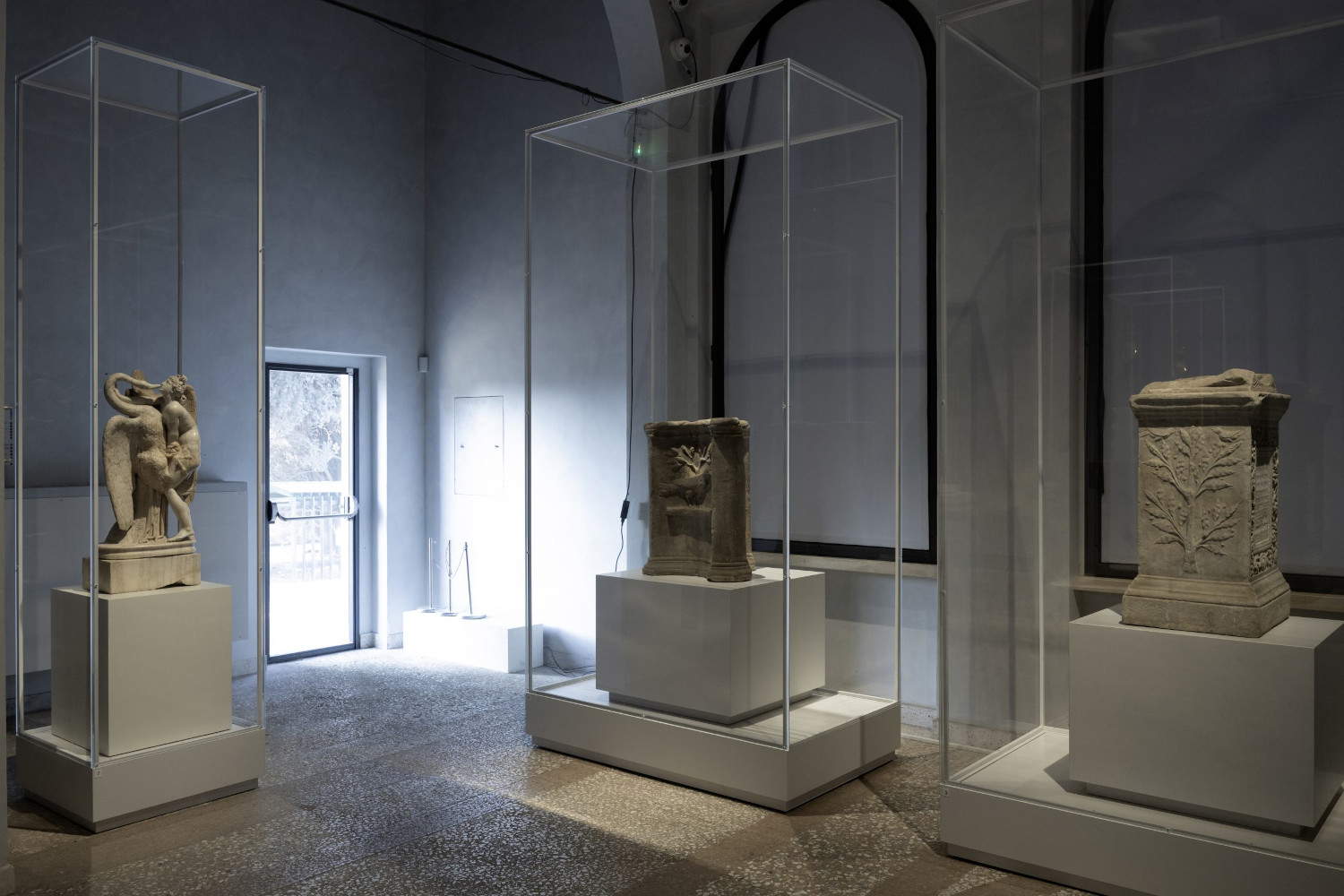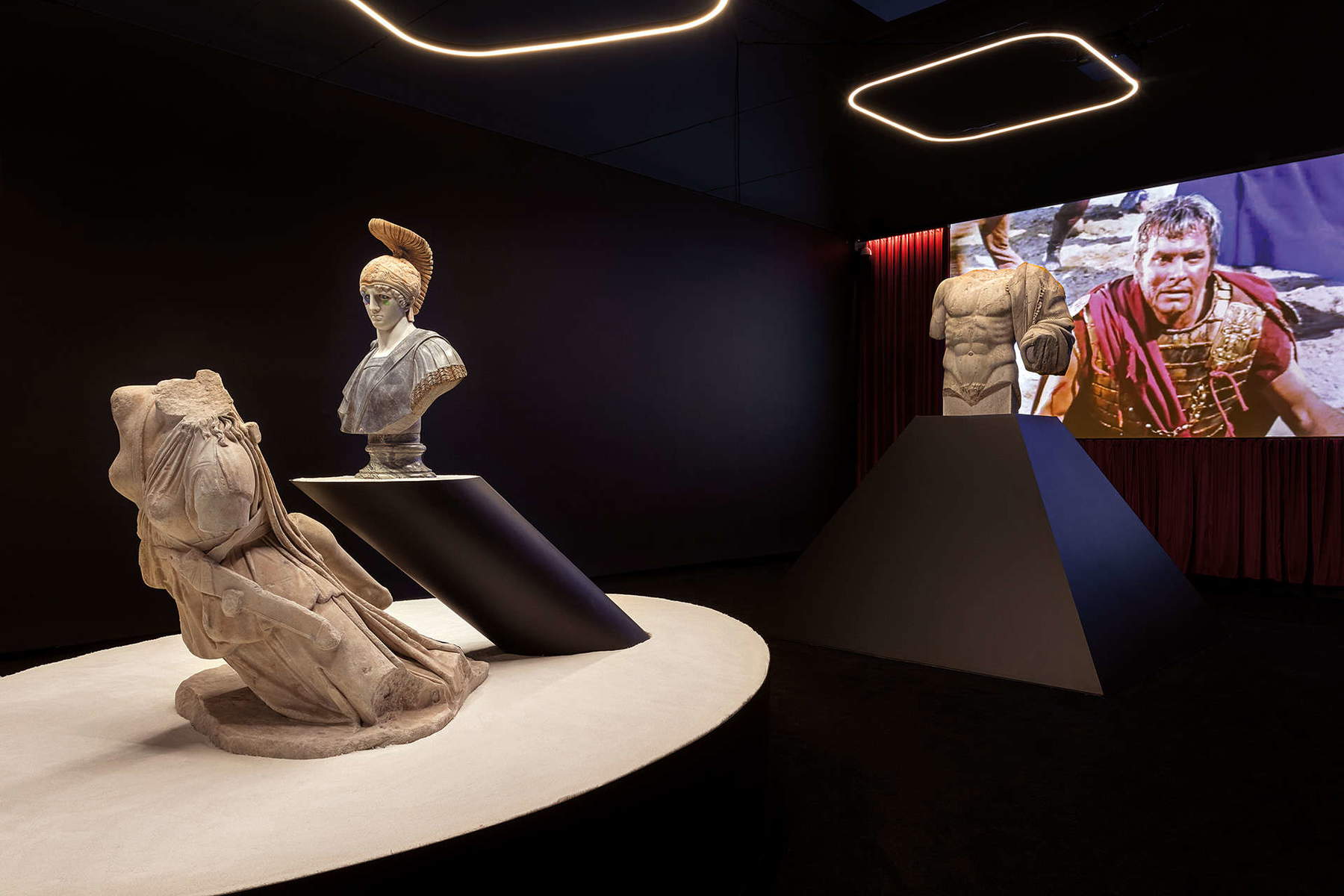It opened on Feb. 13 and will close in a few days, on May 11, in the Farnesian Uccelliere on the Palatine, managed by the Colosseum Archaeological Park, the exhibition"Brancusi: Sculpting Flight," a small selection of works by the Romanian artist, naturalized French citizen, Constantin Brancusi (1876-1957), considered the father of modern sculpture, on display in Rome for the first time. The exhibition is co-organized with the Centre National d’art et de la culture Georges Pompidou in Paris, and is curated by Alfonsina Russo, Philippe-Alain Michaud, Maria Laura Cavaliere and Daniele Fortuna.
The exhibition, writes the Park, “explores one of the main themes of Brancusi’s artistic production: the bestiary of birds.” The exhibition is divided into the two rooms of the Uccelliere, the first dedicated to sculpture, featuring the three works The Rooster (Le Coq, 1935), The Bird (L’Oiselet, 1928) and Leda (1920/1926), and the second to the artist’s photography and films.
What is barely mentioned in the exhibition’s narrative, however, is that amid the works of Brancusi, the exhibition’s sole protagonist, there are also “a selection of antique sculptures” that “enrich the exhibition” i.e. “statues, balsamari, are and rattles from the Roman period, from the National Roman Museum, the National Archaeological Museum of Venice and the National Etruscan Museum of Villa Giulia, which tell of how artistic expressions of the past influenced Brancusi’s visual culture.” Original works, moved from their respective museums in early February (the opening of the exhibition was delayed by a few days). In fact, they are not all from the Roman period, contrary to ParCo’s press releases: there are two VI-V century B.C. balsamari from Villa Giulia, and the Leda and the Swan from the National Archaeological Museum in Venice underwent heavy additions in the Renaissance period. But beyond the details, these presences raise a more general question: does it make sense to move original ancient artworks for exhibitions focused entirely on contemporary art?

The case of the exhibition at the Farnesian Uccellerie is more emblematic than others because of the particular conditions: the Colosseum Archaeological Park is being run on an interim basis, the director Alfonsina Russo has also been head of the newly created department of valorization since July, thus head of all Italian museums, and at the same time she is curator of the exhibition in question. But this is not an isolated case.
One of the most notable in recent years was Francesco Vezzoli’s Vita dulcis exhibition at the Palazzo delle Esposizioni in Rome in 2023: curated by Vezzoli and Stéphane Verger, then director of the Museo Nazionale Romano, it displayed along with film clips and works by Vezzoli (some of which famously reworked Roman art) dozens of works and artifacts of various kinds from the Museo Nazionale Romano. It was a fully-fledged contemporary art exhibition, set up and thought of as such in the spaces, without captions, but in which Roman and fully contemporary works of art overlapped in a deliberately unintelligible way. The National Archaeological Museum in Naples, which has lent a great deal over the past decade, has several times offered masterpieces for exhibitions or even contemporary events (the loan of the Herculaneum Corridori for the Bottega Veneta booth at Milan Fashion Week is now famous, but the Tazza Farnese had also been lent to the Prada Foundation).

The lending of ancient works of art for contemporary art exhibitions (let’s forget events, fairs and airports in this context) is part of the broader and more debated topic of the dialogue between contemporary and ancient art, which has already been covered in this masthead. But with specifics: clear is that a mobile work, to serve as a comparison (or scenic decor, or enrichment) can easily be replaced by a faithful copy. While there is no doubt that the originals give much more to the catalog of an exhibition, to the narrative of it, equally undoubted is that for the visitor interested in the artist after whom the exhibition is named, one more or less Roman altar will make no difference, let alone a copy or not. Not to mention that these exhibits are moved from their museum contexts, where they are sometimes among the reasons for paying the ticket, or supposedly immovable pieces of the collection.
It may be said that that art is what our museums have to sit at the table of the big boys, be it the Centre Pompidou, world-class artists or Foundations. But if Italy has to use its ancient art to convince international artists or institutions to exhibit here, perhaps something is wrong. The risk, not at all hidden, is to set up relationships, between ancient and modern, between state collections and non-state realities, based on subalternity. Ironic for a country that prides itself on having the most important cultural heritage in the world.
Warning: the translation into English of the original Italian article was created using automatic tools. We undertake to review all articles, but we do not guarantee the total absence of inaccuracies in the translation due to the program. You can find the original by clicking on the ITA button. If you find any mistake,please contact us.